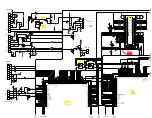
Art. No. DS 4092 TS
4.2.4.7 Energy saving mode
The device has an energy-saving mode to save electrical energy during operation. If the
function is used, the device switches to the energy saving mode after a preset time without
operation or switches to a separate object controlled by an external telegram (see "Activating
energy saving mode"). In the energy saving mode, essential operation and signalling functions
of the device are switched off. The acoustic signal transmitter, the Status LED and the extension
inputs are then without any functions.
The energy saving mode can be deactivated by operating the rotary knob or push-button or by a
special telegram (see "Deactivating energy saving mode"). Afterwards, the device is fully
functional again.
Activating energy saving mode
The device has two different activation options for setting the rotary sensor to the energy saving
mode. These can either be combined together or used separately. Firstly, the rotary sensor can
be set to the energy saving mode by a group telegram using a communication object
designated for this purpose. To do this, the telegram polarity that triggers the activation of the
energy saving mode must be defined in the ETS.
Secondly, it is possible to change automatically to the energy saving mode if an operation no
longer occurs within a defined time period (including the extension). The time for this case is
defined in the ETS. Each operation or status change of the signals at the extension inputs
restarts the time for activating the energy saving mode.
If the energy saving mode is to be activated via the communication object and an operation
takes place on the device at this time (via the rotary knob, push-button or extension inputs), the
activation of the energy saving mode is then delayed until the end of the control operation. This
ensures that the operating functions are still executed properly until the end and all necessary
telegrams are transmitted to the bus.
The energy saving mode is never activated while extension inputs or the programming mode
are transmitting cyclically!
i
On activation of energy-saving mode, the acoustic signal transmitter and the Status LED of
the device are switched off under forced control. An acoustic signal with low or medium
priority, which was active before the energy saving mode and aborted or should be
activated during the energy saving mode, is not executed again or recovered automatically
on deactivation of the energy saving mode. The buzzer must first be reactivated before it
executes an acoustic signal again.
Exception: The device will not activate the energy saving mode while an alarm function
(high priority) is signalled by the buzzer! If the device should activate the energy saving
mode during an active alarm message, the execution of the energy saving mode will be
delayed until the end of the alarm message. The device ignores telegrams for activation of
the alarm function, however, if the energy saving mode was already activated previously.
Thus, an object update of the alarm function during the energy saving mode will not cause
the alarm function to be executed. Just like in the case of signalling with a lower priority, an
alarm function that was active before the energy saving mode and aborted or should be
activated during the energy saving mode, is not executed again or recovered automatically
on deactivation of the energy saving mode. Here, too, the alarm object must first be
reactivated.
Display functions for Status LEDs, which were active before energy-saving mode (e.g.
status displays), are first executed unchanged when energy-saving operation is
deactivated. New control of the objects of the display functions must then take place for the
Status LEDs to signal a current status, or possibly a different one.
i
The communication object of the energy saving mode can either be used just for activation,
or alternatively just for deactivation, or if required, for the combined activation and
deactivation, too. In all cases, the telegram polarity can be configured in the ETS. Only
different polarities can ever be configured (e.g. "0" = mode inactive / "1" = mode active ) for
the combined activation and deactivation.
Page 92 of 143
Software "Rotary sensor with extensions 10FE1x"
Functional description
















































